
Roots
A quiet evening descends, bringing with it the gentle call to rest. As the world outside settles into slumber, a different kind of quiet preparation begins within many homes. For countless individuals, particularly those with textured hair, this nightly transition involves a thoughtful gesture ❉ the covering of one’s hair. This act, seemingly simple, holds within its folds centuries of shared human experience, a delicate interplay of protection, cultural memory, and personal identity.
It speaks to an inherited wisdom about preserving what is precious, whether that be warmth, cleanliness, or the very integrity of one’s strands. The choice of a sleep covering is rarely a casual one; it is a whisper from the past, a practice shaped by the quiet needs of the body and the enduring spirit of various communities.

Historical Echoes of Head Protection
The practice of covering the head for sleep stretches back through distant eras, far predating modern hair care formulations. Early reasons for this custom often centered on pragmatic concerns. In dwellings where heating was scarce, particularly across Northern Europe, a cap offered a simple means to retain body warmth during the chilly nights. These early nightcaps, often made from wool or linen, were not about elaborate style but about utility, serving as a shield against the cold air that permeated unheated bedrooms.
Men and women alike donned these skullcaps, seeking comfort in their slumber. For men, especially those who shaved their heads to accommodate the fashionable wigs of the 18th century, a nightcap provided warmth and a sense of propriety when their wigs were removed for the evening.
Beyond warmth, cleanliness played a quiet but persistent role. Before modern sanitation, hair could easily collect dust, debris, or even small creatures. A covering provided a barrier, keeping hair tidy and shielding it from the environment of the sleeping space. This basic need for hygiene, while less overtly discussed than warmth or social standing, certainly influenced the consistent use of headwear during nocturnal hours across various cultures.

Cultural Significance of Early Coverings
The earliest forms of head coverings for sleep were not solely about physical comfort or cleanliness; they carried symbolic weight. The material and ornamentation of a sleep cap could, at times, signify social standing. Wealthier women in Europe, for instance, might wear bonnets crafted from silk or velvet, sometimes adorned with embroidery, distinguishing their station from those of lesser means who relied on simpler cotton or wool.
In many ancient societies, hair itself held profound symbolic meaning, often tied to identity, social status, or spiritual beliefs. Covering hair, even during rest, could reflect a broader cultural emphasis on modesty, marital status, or a desire to contain spiritual energy. In ancient Assyria, veiling was reserved for aristocratic women, a mark of their standing. Early Jewish societies viewed hair as a private asset, requiring married women to cover it in public, a practice that extended to private moments of rest to maintain a consistent state of modesty.
The ancient act of covering one’s hair for sleep was a quiet acknowledgment of its preciousness, shaped by the immediate needs of warmth, cleanliness, and the unspoken declarations of social position.
The simple act of covering hair, whether for practical reasons or symbolic ones, established a precedent that would ripple through centuries, adapting to new materials, social norms, and cultural expressions. The very concept of a designated “sleep cap” or “night bonnet” became a quiet fixture in the domestic routines of many societies, a testament to the enduring human connection to hair and its care.
The early use of head coverings for sleep can be broadly categorized by their primary intent:
- Warmth ❉ Providing insulation in cold living conditions.
- Hygiene ❉ Protecting hair from dust, dirt, and preserving cleanliness.
- Modesty ❉ Adhering to social or religious norms regarding hair visibility.
- Status ❉ Displaying wealth or social standing through material and decoration.
These foundational reasons laid the groundwork for the more complex and deeply personal factors that would later influence the choice of sleep coverings, especially within communities with textured hair.

Ritual
As we drift from the fundamental considerations of the past, we arrive at the intimate spaces of daily life, where hair coverings for sleep transform from simple objects into components of a deeply personal and cultural ritual. This shift speaks to an understanding that hair care is not merely a task but a quiet ceremony, a moment of gentle attention given to oneself before the world falls silent. It is here that the wisdom of protection truly comes alive, woven into the fabric of nightly routines, preserving not only physical attributes but also a sense of peace and preparedness for the day ahead.
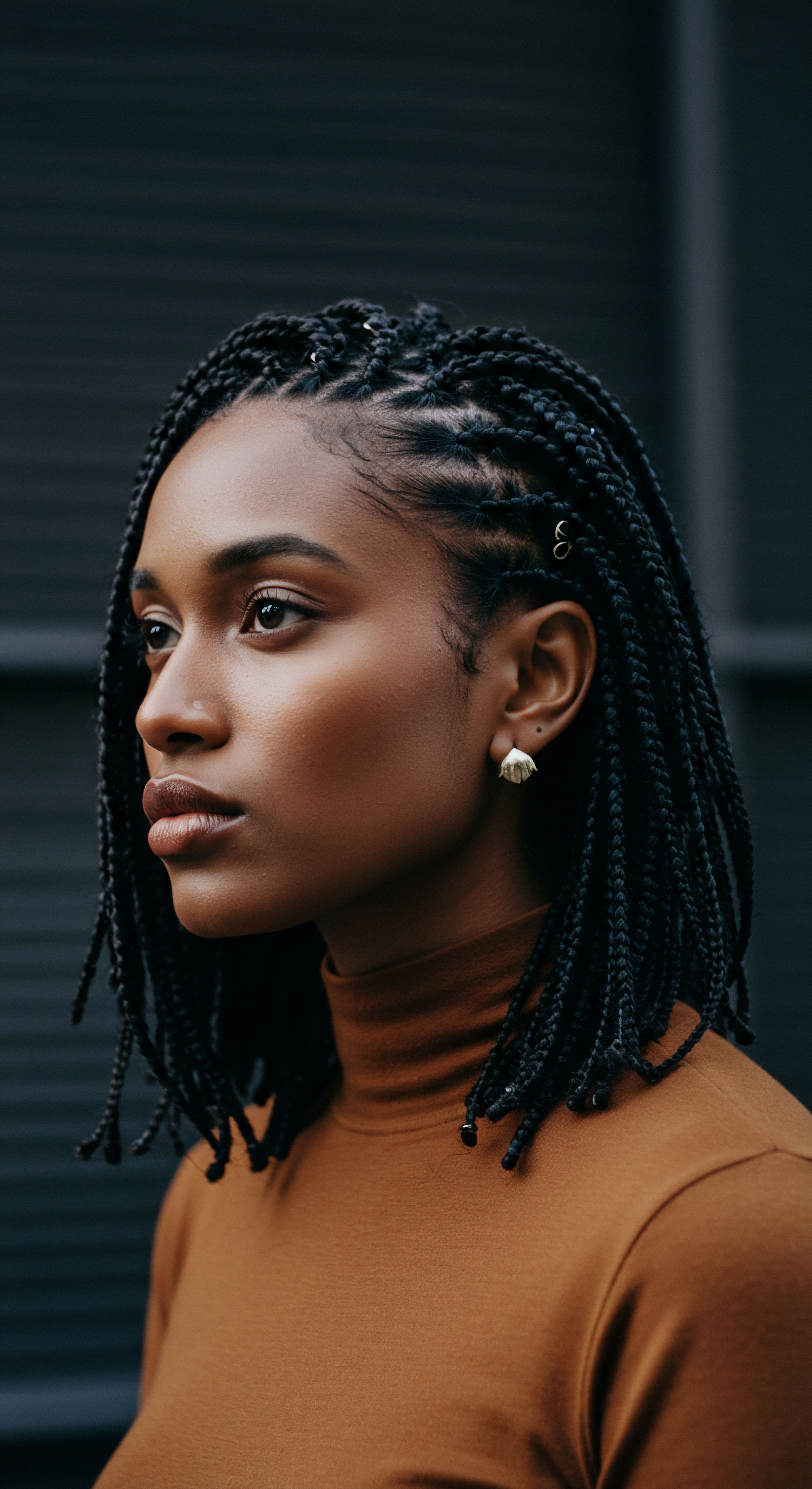
The Preservation of Style and Hair Health
For many, particularly those with curls, coils, and waves, the choice of a sleep covering is directly linked to the practical aim of maintaining hair integrity and style. Textured hair is known for its delicate structure, prone to tangling, breakage, and moisture loss when subjected to friction from common bedding materials like cotton. Cotton, with its absorbent and somewhat abrasive fibers, can draw moisture from the hair, leaving it dry and susceptible to damage.
This understanding, often passed down through generations, has led to the widespread adoption of coverings made from smoother materials.
A satin or silk covering during sleep helps hair glide rather than catch, reducing friction that leads to tangles and breakage.
Modern insights affirm this traditional wisdom. A study published in the Textile Research Journal indicated that high-quality silk withstands more mechanical stress than regular cotton, maintaining its structure and softness, which translates to less friction against hair. This scientific validation reinforces a practice long understood intuitively ❉ the smooth surface of silk or satin creates a less damaging environment for hair during the tossing and turning of sleep.
The nightly ritual of covering hair also serves to preserve hairstyles, extending their life and reducing the need for daily restyling. For those with intricate braids, twists, or straightened styles, a sleep covering acts as a protective shield, keeping strands in place and minimizing frizz. This practical application saves time and effort in the morning, contributing to a more seamless start to the day.
Consider the common scenarios where a sleep covering becomes an indispensable tool:
- Protecting Braids and Twists ❉ Securing these styles prevents loosening and frizz, prolonging their neat appearance.
- Maintaining Straightened Hair ❉ Shielding against humidity and friction helps a silk press or flat-ironed style remain sleek.
- Preserving Curl Definition ❉ Keeping curls from flattening or tangling ensures they retain their shape and bounce.
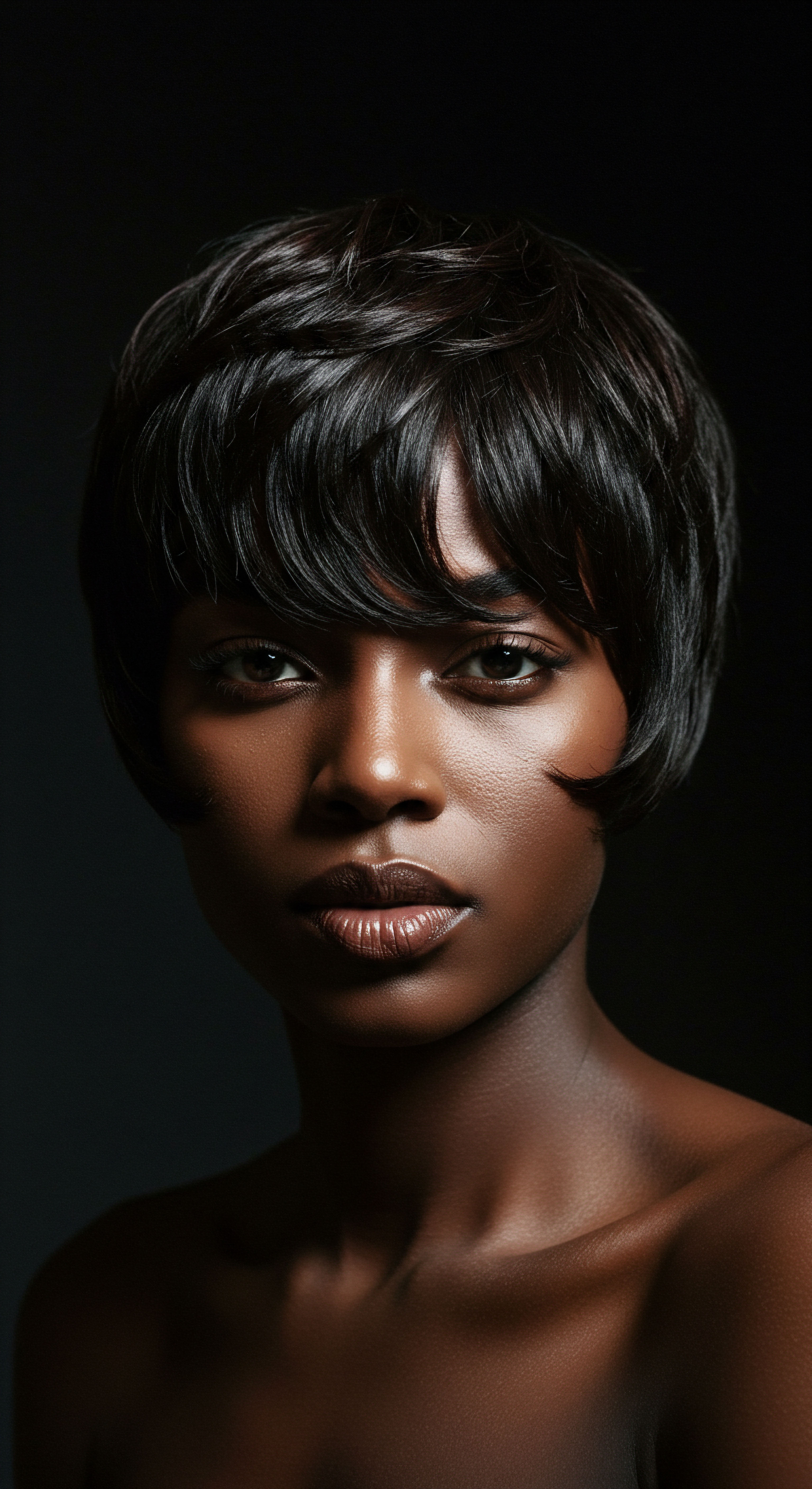
How Do Materials Affect Hair Protection?
The material composition of a sleep covering plays a direct role in its effectiveness. The difference between common cotton and smoother alternatives is quite striking for hair health.
| Material Type Cotton |
| Hair Interaction Absorbent, rough fibers |
| Moisture Impact Dries hair by absorbing natural oils |
| Friction Level High, leads to tangles and breakage |
| Material Type Satin (Synthetic) |
| Hair Interaction Smooth, synthetic fibers |
| Moisture Impact Less absorbent than cotton, helps retain moisture |
| Friction Level Low, reduces friction |
| Material Type Silk (Natural) |
| Hair Interaction Very smooth, natural protein fibers |
| Moisture Impact Non-absorbent, retains hair's natural hydration |
| Friction Level Very low, minimizes breakage and frizz |
| Material Type The choice of material significantly impacts hair health and style longevity during sleep. |
While silk is often lauded for its superior qualities, satin, a synthetic alternative, provides similar benefits at a more accessible price point, making protective sleep coverings available to a wider audience. The key lies in the smooth surface, which allows hair to move freely without snagging or causing mechanical stress.
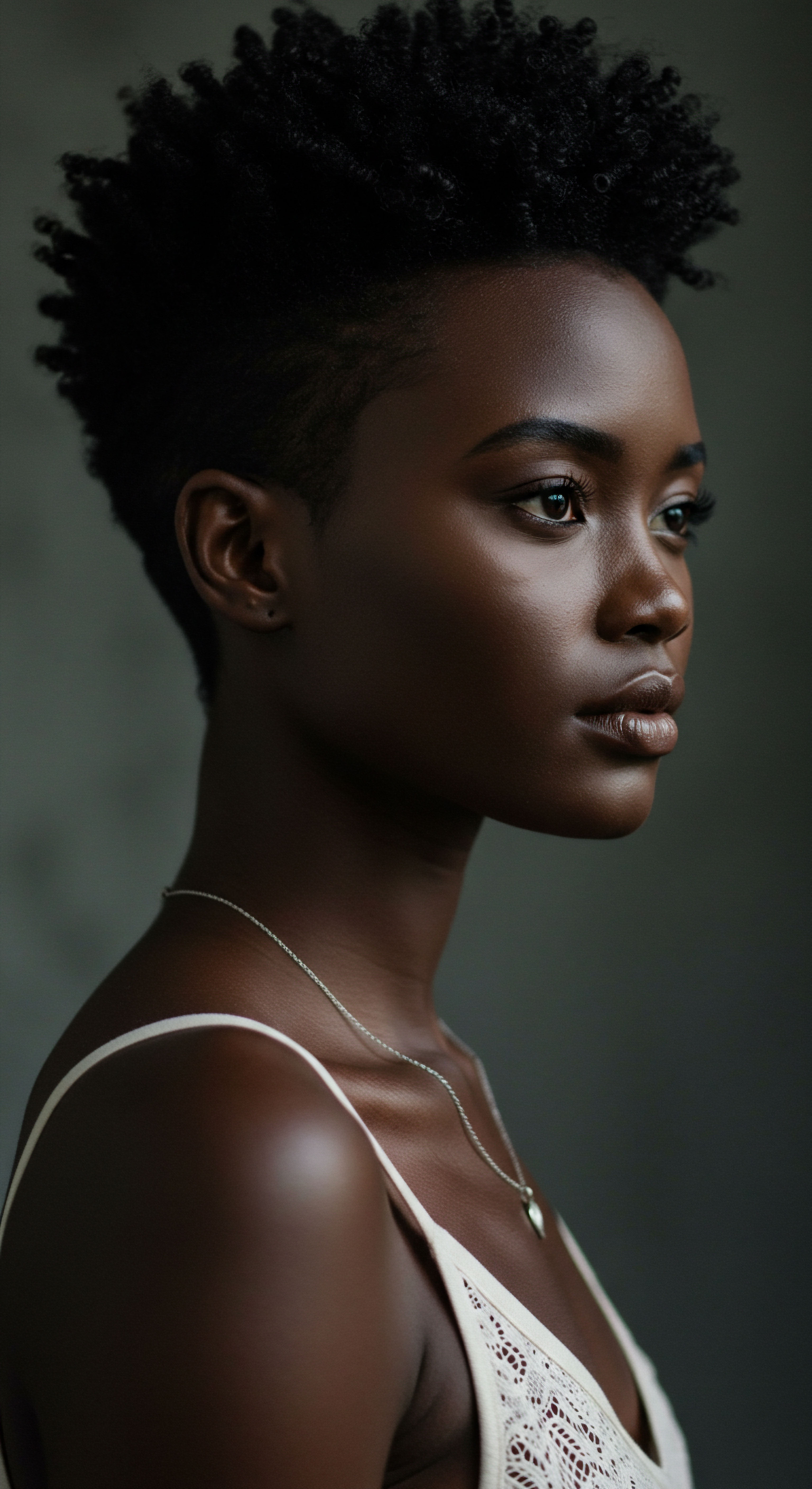
Beyond the Physical ❉ A Sense of Care
The ritual of covering hair for sleep extends beyond physical preservation. For many, it has become an act of self-care, a moment of intentionality at the close of the day. This practice provides a sense of peace, knowing that one’s hair is protected and nurtured, contributing to a more restful night.
Studies suggest that a self-perceived good hair day can improve one’s outlook, and waking with hair that has been protected and cared for can foster confidence for the day ahead. This daily ritual becomes a quiet affirmation of self-worth and a connection to ancestral practices, particularly within Black communities where the bonnet has deep cultural roots.
This connection to well-being and a gentle approach to hair care transforms the simple act of wearing a sleep covering into a meaningful part of a nightly winding-down routine, reflecting a holistic view of health where external care supports internal calm.

Relay
Stepping into the deeper currents of influence, we discern how the seemingly private choice of a hair covering for sleep is, in truth, a complex intersection of societal currents, historical burdens, and enduring cultural affirmations. This exploration moves beyond mere utility or ritual, seeking to grasp the profound layers of meaning that shape this nightly practice. We consider how broad historical movements and collective cultural experiences have quietly, yet powerfully, informed individual decisions about protecting one’s hair while resting.

How Do Historical Power Dynamics Shape Hair Covering Choices?
The historical context surrounding hair coverings, particularly for Black women, is deeply intertwined with power dynamics and social control. While European women in the mid-1800s used bonnets for warmth and to preserve hairstyles, headwraps in African regions held complex social, cultural, and spiritual significance, reflecting wealth, ethnicity, marital status, and even emotional states. This contrast sets the stage for a darker chapter in history.
During enslavement in the United States, headwraps and bonnets, once symbols of identity and status, were weaponized. They were used to visibly distinguish Black women, aiming to strip them of their dignity and humanity. Laws in certain regions even mandated that Black women cover their hair in public, intending to signify their supposed inferior status.
Yet, in an extraordinary act of resistance, enslaved Black women reclaimed these coverings, transforming them into tools of cultural expression and covert communication. The folds of a headscarf might conceal coded messages, becoming a quiet declaration of resilience against oppression.
This history casts a long shadow, influencing contemporary choices. The enduring practice of wearing bonnets and scarves for sleep within the African American community today is not merely about hair health; it is a continuation of this legacy of protection, self-preservation, and a quiet assertion of dignity in the face of historical attempts to diminish it. It is a daily act that honors ancestral practices and asserts cultural continuity.
This historical burden and subsequent reclamation underscore the profound cultural factors at play. The choice of a sleep covering becomes a subtle, yet powerful, act of cultural affirmation and resistance, reflecting a conscious effort to preserve not just hair, but also heritage and identity.
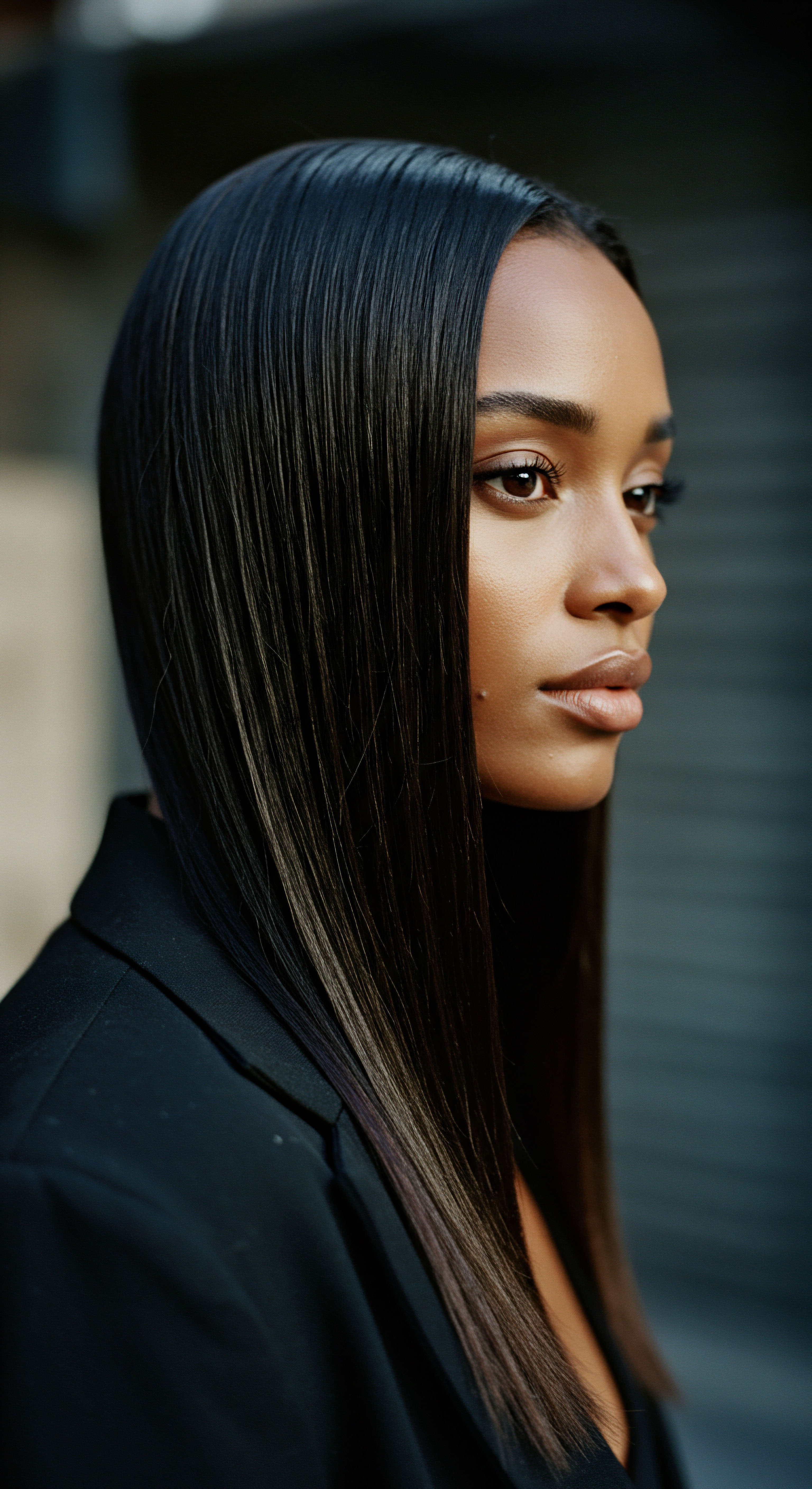
What Is the Interplay of Hygiene, Modesty, and Hair Care Across Eras?
The factors of hygiene, modesty, and hair care have long converged in the practice of hair coverings for sleep, their emphasis shifting with societal norms and available technologies. In ancient times, as previously noted, coverings offered protection from cold and dirt. As societies evolved, so did the specific reasons for covering hair.
Consider the Victorian era in Europe. While some nightcaps were used for warmth, particularly in unheated bedrooms, their role in hair care was sometimes debated. Some sources suggest their use for perfuming hair or simply keeping it tidy, while others question their primary role in preserving elaborate hairstyles, noting that brushing hair before bed was a more common recommendation. However, as hairstyles became more complex, especially after 1770, outdoor coverings like the calash were used to protect intricate coiffures from the elements, hinting at a growing awareness of hair preservation.
The evolution of hair care practices and the understanding of hair science have also influenced the choice of sleep coverings. The recognition that friction from rough fabrics like cotton can damage hair, particularly for textured hair types prone to dryness and breakage, has driven the adoption of smoother materials. This understanding is not new; ancient cultures likely observed the benefits of smoother fibers, leading to the use of silk and other gentle materials for hair protection.
The enduring practice of covering hair for sleep is a testament to the persistent human desire to protect and preserve, adapting across cultures and centuries to serve both practical needs and deeper expressions of identity.
This historical trajectory reveals a continuous adaptation of practices to meet the evolving needs of hair and societal expectations. The modern silk or satin bonnet, while seemingly contemporary, stands as a direct descendant of these historical head coverings, inheriting their purpose of protection and their cultural resonance.
The table below summarizes some historical and contemporary influences on sleep hair coverings:
| Historical Period / Cultural Context Medieval Europe |
| Primary Influence(s) Warmth, basic hygiene |
| Example Simple wool/linen nightcaps, |
| Historical Period / Cultural Context 18th Century Europe (Wig Era) |
| Primary Influence(s) Warmth, modesty (post-wig), fashion |
| Example Decorated silk nightcaps, |
| Historical Period / Cultural Context African Regions (Traditional) |
| Primary Influence(s) Identity, status, spiritual beliefs, protection from elements |
| Example Dukus and doek, |
| Historical Period / Cultural Context Enslavement Era (Americas) |
| Primary Influence(s) Weaponization, then resistance, cultural expression |
| Example Mandated headwraps reclaimed for coded messages, |
| Historical Period / Cultural Context 20th-21st Century (Textured Hair Care) |
| Primary Influence(s) Hair health, moisture retention, style preservation, cultural continuity |
| Example Silk/satin bonnets and scarves, |
| Historical Period / Cultural Context Factors influencing sleep hair coverings have shifted over time, yet protection remains a constant. |
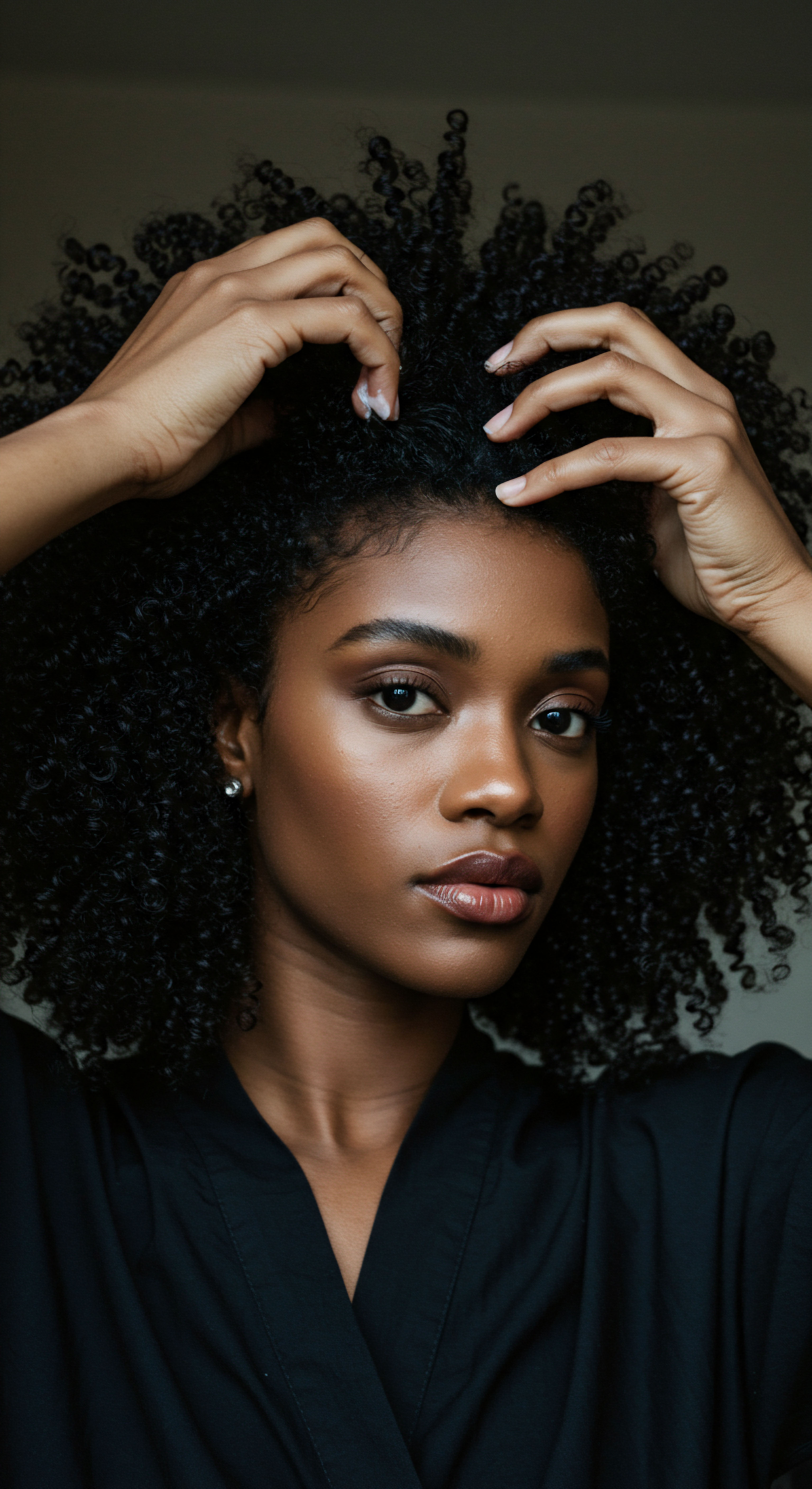
What Does the Choice of Material Tell Us About Hair Care Evolution?
The material chosen for sleep coverings offers a compelling lens through which to view the evolution of hair care knowledge. While modern science has illuminated the microscopic interactions between hair and fabric, historical choices often reflected an intuitive understanding of what best preserved hair.
The preference for silk and satin in many contemporary protective coverings for textured hair is a testament to their low friction properties. This scientific principle, that smoother surfaces reduce mechanical damage to hair cuticles, has been validated by research. For example, a 2016 paper by Dr. Angela Y.
Kim and colleagues, published in the Journal of Cosmetic Dermatology, highlighted the benefits of silk against hair damage compared to cotton. While this specific study is modern, the awareness of such benefits, albeit unarticulated in scientific terms, likely existed in ancient societies.
Consider the long-standing use of silk in hair care across various ancient cultures. Indian women historically used silk scarves to shield their hair from dust, sun, and pollution, recognizing its smooth texture helped reduce friction and breakage. In ancient Persia, silk wraps protected hair from harsh desert climates, maintaining its luster. These practices suggest an experiential understanding that certain materials offered superior protection for hair, even without the backing of modern laboratory analysis.
The historical continuity of using smoother, less absorbent materials for hair protection during sleep, culminating in the widespread adoption of silk and satin bonnets today, speaks to a collective, evolving knowledge about hair care. This knowledge, passed down through generations and now supported by scientific inquiry, underscores the enduring human endeavor to safeguard the hair that crowns us.
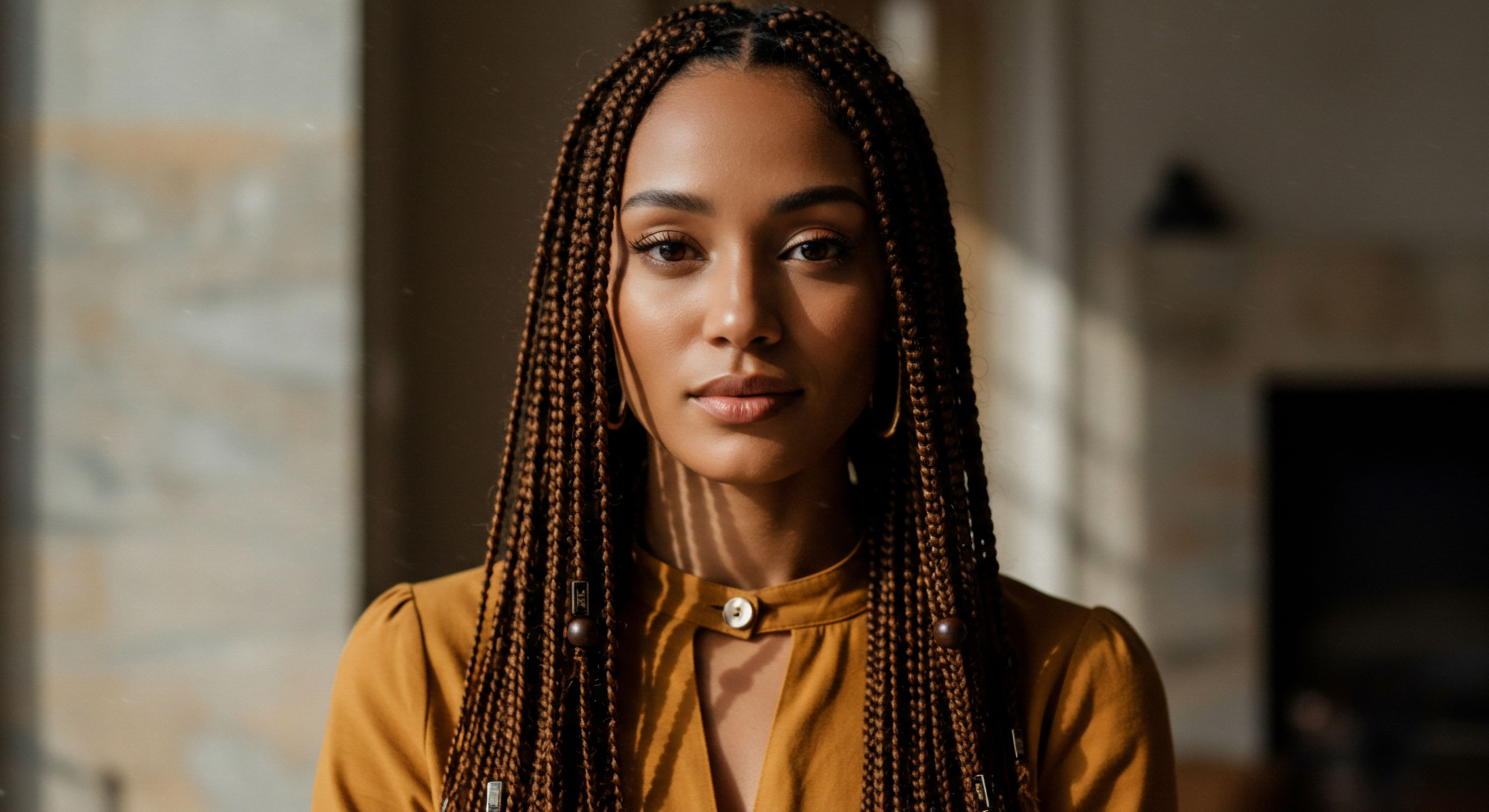
Reflection
As the quiet of night descends, the choice of a hair covering for sleep reveals itself not as a simple habit, but as a deep conversation across time and cultures. It is a practice shaped by the primal human need for warmth and cleanliness, yet equally sculpted by the profound social narratives of modesty, status, and, for many, the enduring legacy of resistance and self-worth. The soft drape of a silk bonnet or the secure wrap of a scarf becomes a quiet affirmation, a nightly act of care that speaks to centuries of shared wisdom. This seemingly small gesture, repeated in countless homes, holds within its folds a story of resilience, an intimate connection to heritage, and a gentle promise of well-being that extends far beyond the morning light.
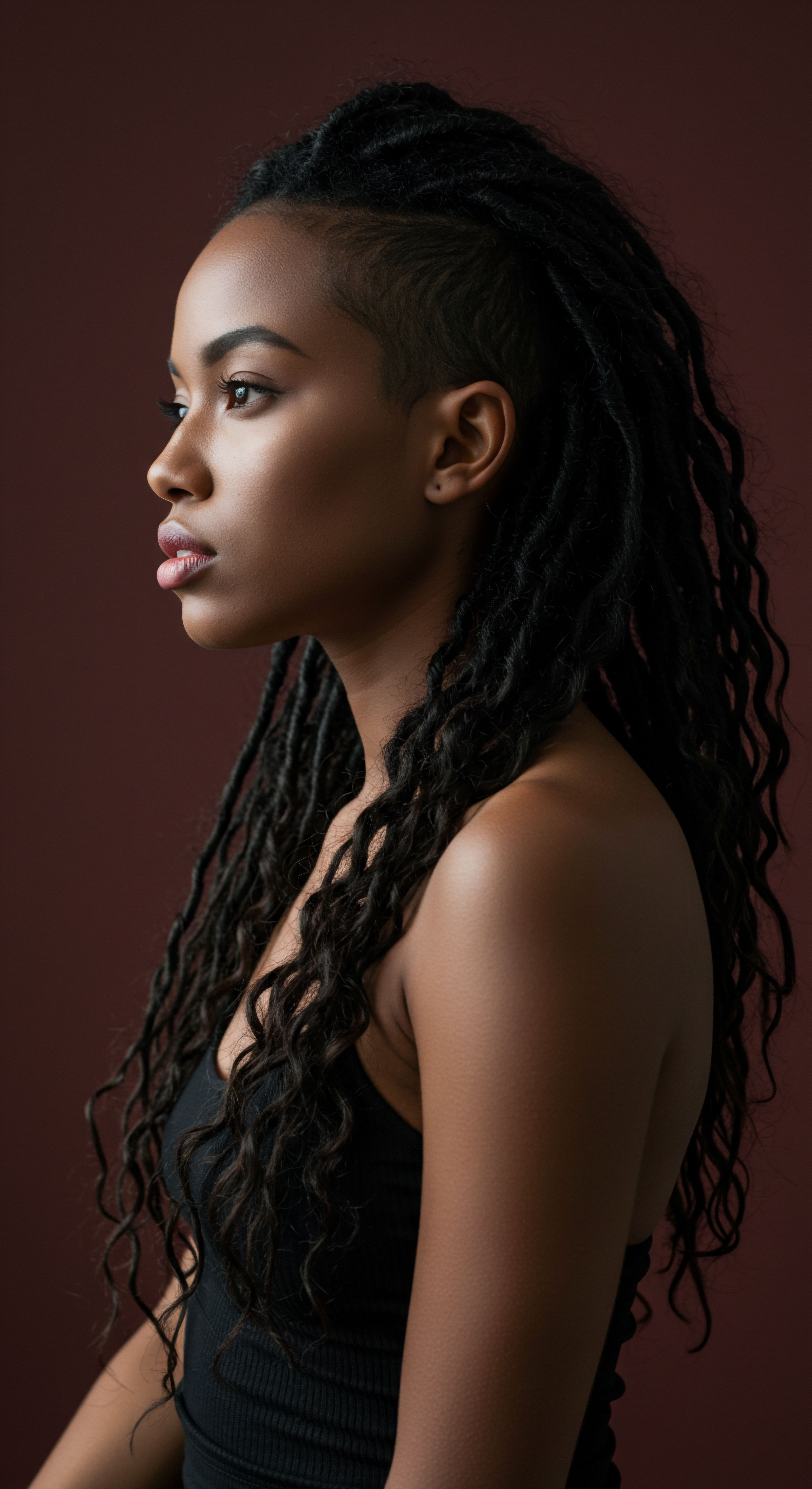
References
- 1. Byrdie. “The Significance and History of Bonnets.” Published September 27, 2022.
- 2. Verlo Mattress. “Sleep Caps for the Modern Woman.” Published March 25, 2022.
- 3. Wilderness Safaris. “The history & meaning of head wraps across Africa.” Published January 25, 2015.
- 4. Girl of a Different Era. “The History of Women’s Head Covering.” Published August 30, 2020.
- 5. Pat Strong. “Way To Care For African American Hair At Night.” Published January 13, 2020.
- 6. Dane County Department of Human Services. “Afro-Beauty-Hair-Care-Booklet.pdf.”
- 7. Draelos, Zoe Diana. “Contemporary African-American Hair Care Practices.” Journal of Clinical and Aesthetic Dermatology, vol. 8, no. 5, May 2015, pp. 10–12.
- 8. Birico. “Silk vs Cotton ❉ Which Pillowcase Is Better for Your Skin and Hair?”
- 9. Esme Luxury. “Silk Hair Wraps in Different Cultures ❉ A Global Perspective.” Published August 6, 2024.
- 10. YouTube. “Sweet Dreams ❉ a History of the Nightcap.” Published June 1, 2024.
- 11. Roseborough, I.E. and A.J. McMichael. “Hair Care Practices in African-American Patients.” Seminars in Cutaneous Medicine and Surgery, vol. 27, no. 2, June 2008, pp. 105–109.
- 12. Bible Research. “Headcovering Customs of the Ancient World.”
- 13. Theology in the Raw. “The Cultural Context for the Hair Length/Style vs. Head-coverings Debate in 1 Cor 11 ❉ The Meaning of Kephalē part 12.” Published May 14, 2024.
- 14. Sew Historically. “History Of The Nightcap – Victorian And Edwardian Hair Care.” Published June 8, 2019.
- 15. Quora. “Why do black people wear head/hair caps to bed?” Published March 13, 2022.
- 16. Quora. “Why did people formerly wear nightcaps, and why do they not wear them now?” Published January 16, 2017.
- 17. Wikipedia. “Bonnet (headgear).”
- 18. Sleep.com. “How a Hair Wrap Routine Protects More Than Just My Hair.” Published September 3, 2021.
- 19. Lab Muffin Beauty Science. “Silk for Skincare and Haircare.” Published October 18, 2020.
- 20. Hairlust. “The Truth About Silk Bonnets ❉ Why a Bamboo Hair Bonnet is Better.” Published April 2, 2025.
- 21. Mental Itch. “The History of the Bonnet.”
- 22. Recollections Blog. “Victorian nightcaps.” Published October 28, 2021.
- 23. Dusty Old Thing. “Did People Really Wear Nightcaps in the Old Days?”
- 24. The Clifford Clinic. “Unraveling The Myth ❉ Can Silk Pillows Prevent Hair Loss?” Published March 28, 2024.
- 25. Helix Hair Labs. “THE HISTORY OF THE HAIR BONNET.” Published March 3, 2023.
- 26. Ninkus. “A Bedtime Essential, Not a Daytime Accessory The Historical Role of Bonnets.” Published December 9, 2024.
- 27. Student Beans. “Everything You Need To Know About Sleeping In A Silk Hair Bonnet.” Published March 13, 2024.
- 28. Hairlaya. “The best way to keep your hair healthy while sleeping. Seven reasons t.” Published March 9, 2022.
- 29. Wikipedia. “Nightcap (garment).”
- 30. Silkbiotic. “Comparison of silk pillowcases and cotton pillowcases.”
- 31. This Jungian Life. “SYMBOLIC MEANING of HAIR ❉ what’s your look saying?” Published April 20, 2023.
- 32. Quora. “Why do some black people wear silk caps to bed?” Published March 20, 2015.
- 33. The Times of India. “Why You Shouldn’t Leave Your Hair Open During Religious Rituals.” Published September 27, 2024.
- 34. Tuft of hair ❉ Significance and symbolism.
- 35. Dariia Day. “Silk vs. Cotton & Satin ❉ What’s the Best Fabric for Your Skin, Hair & Sleep?” Published February 21, 2025.
- 36. Quora. “What does it mean when one’s hair is shaven mysteriously while asleep?” Published October 30, 2021.
- 37. Samrao, V. et al. “Techniques Used for Hair Style Maintenance while Sleeping May Be a Risk Factor for Traction Alopecia.” Journal of Clinical and Aesthetic Dermatology, vol. 14, no. 2, Feb. 2021, pp. 48–51.
- 38. Obé Headwear. “Significance of headwraps | Hair care.” Published August 5, 2024.